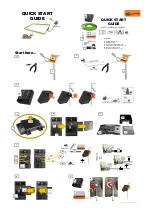
6/21/96
14
the trouble shooting flow chart. If you still need help call your dealer or Heart Interface.
It is now time to start up the engine and see how everything works.
For this test
make sure the battery charger or any other charging sources are turned off.
Partially
discharge the batteries (remove at least 20% of the capacity, it may take a few hours at a
relativity high discharge rate). Start the engine and watch the battery voltage to see that
it raised to and levels off at about 14.4 Volts in the Acceptance Cycle. With the default values,
when the battery current falls to about 4 Amps ( 2% of the battery capacity) the regulator will
shift into the Float Cycle and maintain the batteries at the Float voltage. Also check the alternator
current by pressing the
TIME
button and using a milliVolt meter to measure the voltage drop
across the alternator shunt and comparing it to the reading on the
LINK 2000-R.
The milliVolt
reading multiplied by ten should about equal the
LINK 2000-R
alternator current reading . The
alternator current measurement is inherently less accurate than the battery current measurement,
you may see up to + 3 amps error.
STANDBY REGULATORS
Part of our power system design philosophy is to consider spares and backup
systems before they are needed. We have designed the Ideal Regulator with this in
mind.
The Ideal Regulator Output Module wiring harness is compatible with standard P-
Field external regulators. Simply carry a spare regulator that is plug compatible and just
unplug the Output Module and plug in your standby regulator. You may use a simple,
adjustable, constant voltage regulator or we would suggest that you consider the Heart
Interface Incharge Regulator (or the Alpha Regulator from Cruising Equipment) which
provides three stage charging, plug compatibility, and it is fully adjustable
.
Install and test your standby regulator or any other spares you might carry
before cruising!
































